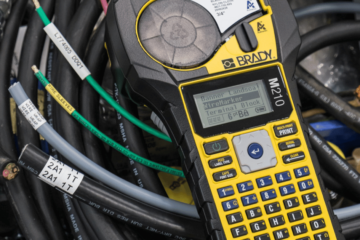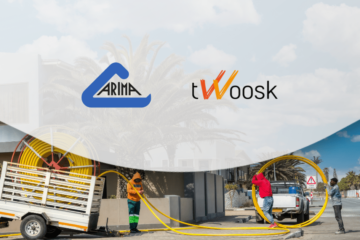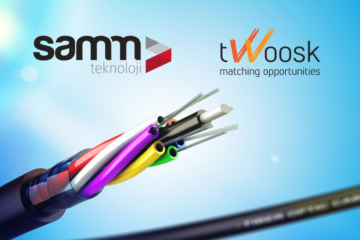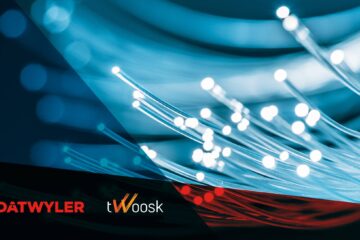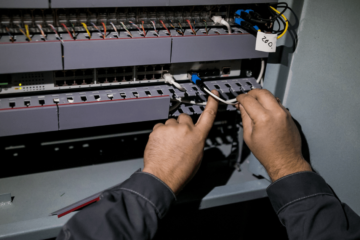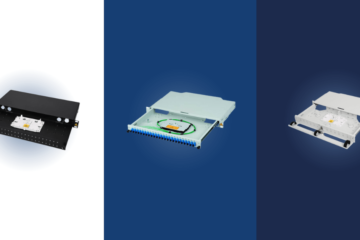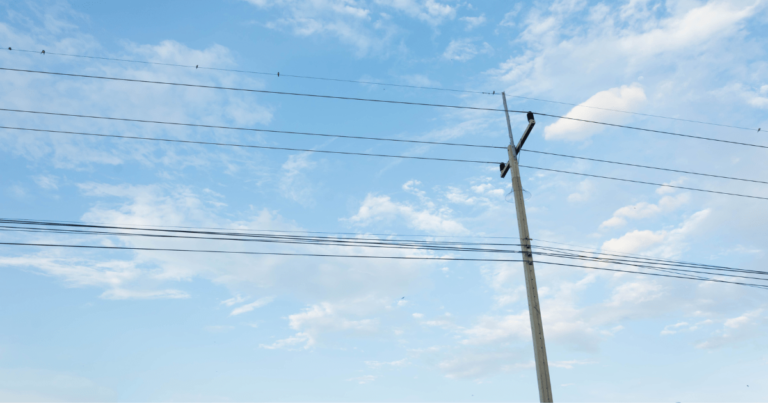
Fiber optic aerial cables are used in telecommunication networks that are installed on poles, towers, or other structures above the ground. Aerial fiber optic networks are designed to provide high-speed internet, television, and telephone services to homes and businesses. These are often used in rural or suburban areas where it is impractical or too expensive to bury cables underground. They are also commonly used in urban areas where there are already existing poles and infrastructure to support the installation of these networks.
What are Aerial Fiber Optic Cables?
In optical signal transmission, we often have to overcome long distances, and one solution for these long paths is the installation of aerial cables.
For these applications, an aerial installation is a much faster and cheaper method. However, these cables are directly exposed to the elements, which can be quite severe in some locations.
Aerial cables are built to have a lifespan of 25 years, resisting wind, rain, ice, heat, UV rays, and other constant weather variations that occur with the seasons or even throughout the day. However, in some locations, where temperatures can vary greatly in just a few hours, elongation or contraction can happen in both the cable and its supporting structures, which can affect the conditions of the fibers inside.
Therefore, as always, the choice of cable should take into consideration the local conditions, including the maximum and minimum temperatures, hours of sun exposure, humidity, and so on.
How are Aerial Fiber Optic Cables Classified
Aerial cables can be classified into two categories: Self-supported and Catenary. The choice between these two types depends on the installation’s location.
If we want to install the cable on a path that already has support to attach it, where we don’t have to worry about the span of the cable, we can use a catenary cable and fix it to the existing messenger wire.
If the installation doesn’t have an existing messenger wire, we can opt for the self-supported aerial optical cable type, which as the name implies, has a structure that allows us to overcome long distances by fixing it only on the poles.
Within the Self-suported category, there are three different types of aerial fiber optic cables:
- ADSS (All Dielectric Self-supporting Cable): It’s a very strong cable that can support its own weight. It can be deployed to up to 1000 meters between support poles, which is a considerably long extend ability. The fibers inside this type of aerial fiber optic cable are completely loose in the core of it to prevent attenuation, due to possible cable deformations. They are standard for accompanying power transmission lines.
- Fig 8: The name of this self-supported cable comes from its strength element being located on the exterior of the cable, forming a figure of the number 8 when cut. This strength member can be made of steel or dielectric material. This type of aerial fiber optic cable can withstand very high-tension forces and extends up to 180 meters. Figure 8 cables can be divided into three types, but all three have high mechanical strength, water protection, and high UV resistance:
- GYTC8S type: The fibers are protected in a corrugated steel tube for great mechanical strength.
- GYXTC8Y type: It has a loose tube with water blocking and waterproof properties.
- GYXTC8S type: The fibers are protected in a corrugated steel tube for high mechanical strength, and it also has loose tubes with water-blocking and waterproofing properties.
- GYTC8S type: The fibers are protected in a corrugated steel tube for great mechanical strength.
- OPGW (Optical Ground Wire): These are fully metallic cables, capable of holding large quantities of fibers inside. These aerial fiber optic cables are used in power lines and work for both data transmission and protection against lightning strikes.
What are the Main Benefits of Aerial Fiber?
The main advantages of aerial fiber optic cables are:
- These can be easily installed due to being very lightweight and flexible (except for OPGW cables).
- Often, in the path we want make, there already exist electrical or other network poles, and we can take advantage of these existing paths.
- Aerial fiber optic cables allow for covering long distances fast, sometimes in just a day’s work.
However, they also have disadvantages like the visual pollution they cause to landscapes, increased risks of contact due to exposure (some cables are hit by hunting shots), and impact from the environment, that translate into greater maintenance needs for these cables.
Key Factors to Consider When Deploying Aerial Fiber
Before initiating the instalment of aerial fiber optic cables there are some preparations that should be done:
Survey
- Verify and plan the cable trajectory. Consider if there are any obstacles in that trajectory like trees, roads, rivers and so on, and plan how to get around them.
- Depending on the conditions of the location, choose the cable instalment method – decide if it’s better to use a moving reel method or a stationary reel method.
- Plan the distance between the cable’s support points.
- Define where to install the distribution boxes.
Instalment
- Properly flag the intervention area with cones, tape, etc., to prevent accidents along the fiber’s trajectory.
- Handle the fiber cables thoughtfully, as these can be damaged if not installed carefully. Complying with the tension limits or curvature radius of these cables is essential to maintain its characteristics.
- After instalment it’s important to have an inspection, through all the trajectory, to make sure that there isn’t any looseness, folds, and if the cables aren’t too close or touching trees, or other obstacles.
Overall, there are many benefits of using aerial fiber optic cables, but these can only be attained if the proper type of cable is used for the context, and much consideration is put into every step of the deployment phases.



